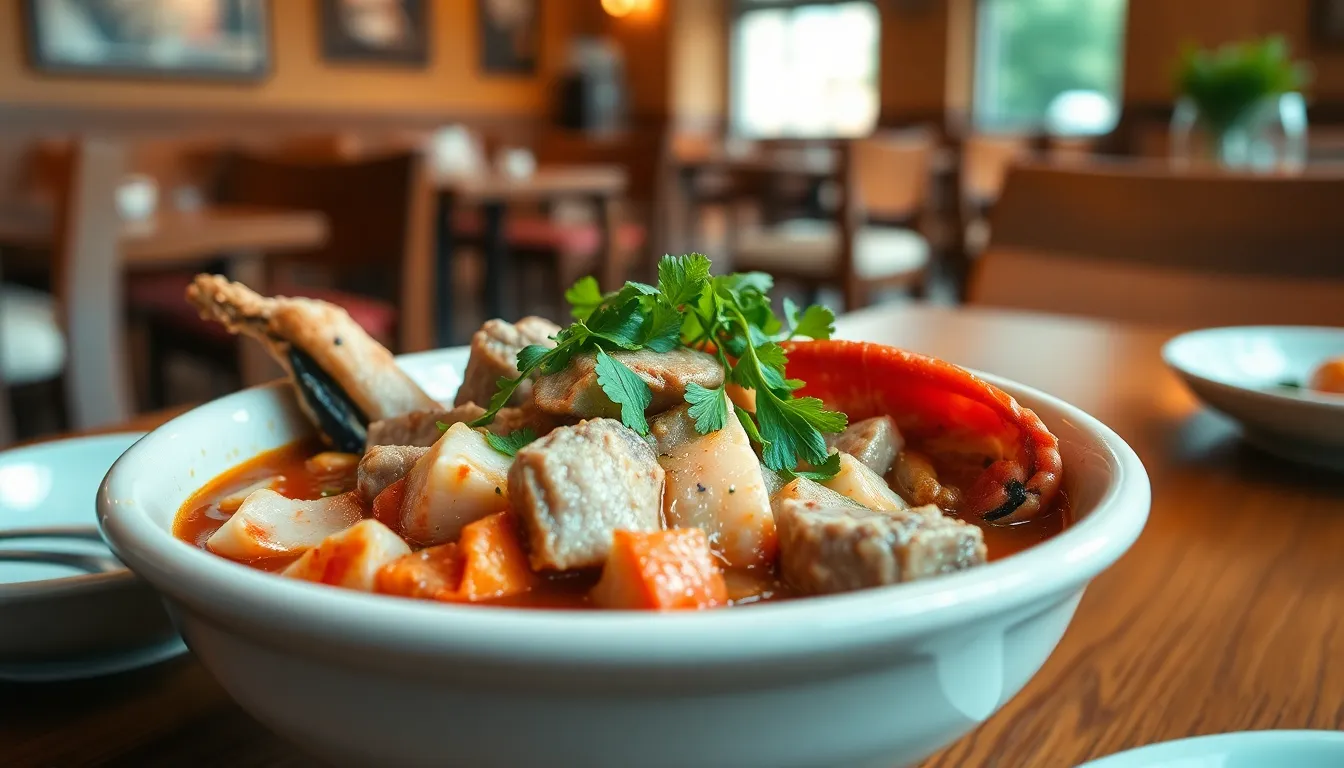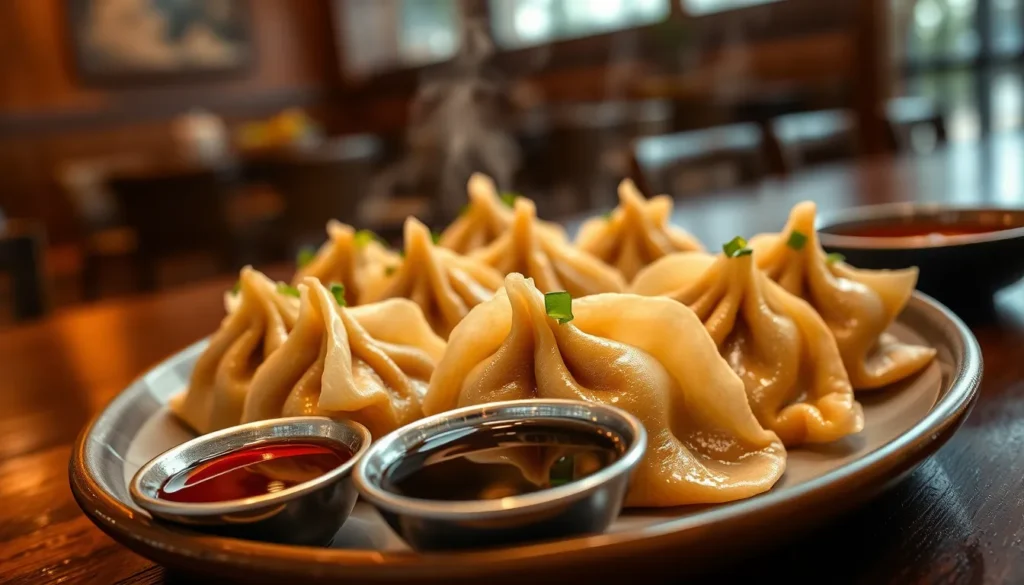Bikimsum lovers know the joy of savoring those delightful dumplings, but what happens after the last bite? If you’ve ever felt like a bikimsum brick is sitting in your stomach, you’re not alone. The truth is, these delicious little parcels can take their sweet time to digest, leaving many to wonder why their favorite treat feels more like a marathon than a sprint.
The secret lies in the ingredients and the way they’re prepared. Packed with protein and often accompanied by rich sauces, bikimsum can be a heavy load for the digestive system. But don’t worry, it’s not just you—everyone experiences this slow ride through the digestive track. So, grab your chopsticks and settle in as we dive into the science behind why bikimsum can feel like it’s doing the tango in your tummy long after the meal is over.
Table of Contents
ToggleUnderstanding Bikimsum
Bikimsum, a popular dish, often leaves diners feeling heavy. This sensation stems from its ingredients and preparation.
What is Bikimsum?
Bikimsum refers to a type of dumpling commonly enjoyed in various Asian cuisines. It’s typically filled with protein-rich components such as meat, seafood, or tofu. Chefs steam or pan-fry these dumplings, resulting in a tender texture that enhances the dish’s appeal. Diners appreciate bikimsum for its flavorful fillings and versatile dipping sauces. Enjoying these dumplings often involves an indulgent experience, contributing to the feeling of fullness.
Ingredients in Bikimsum
Ingredients play a significant role in bikimsum’s digestion time. Common fillings include shrimp, pork, or chicken, which are high in protein. Heavy sauces, such as soy sauce or chili oil, also accompany many servings, adding richness. Gluten-based wrappers are prevalent, contributing to the overall density of the dish. Combinations of these elements create a satisfying flavor profile but also increase digestion time. Thus, the nutritional density impacts how quickly the body breaks down these dumplings.
The Digestive Process

Understanding digestion helps explain why bikimsum takes longer to digest. This process involves breaking down food into smaller components that the body can absorb.
How Digestion Works
Digestion begins in the mouth, where chewing and saliva start breaking down food. The stomach then further processes bikimsum, mixing it with gastric juices that help dissolve proteins and fats. Afterward, the small intestine absorbs most nutrients into the bloodstream. Although this entire process can take several hours, the high protein content in bikimsum adds to the time required for the body to fully break it down.
Factors Affecting Digestion Time
Multiple factors influence how quickly bikimsum digests. First, the protein-rich ingredients, such as meat or seafood, generally take longer to process. Second, the presence of heavy sauces increases the overall fat content, which also slows digestion. Additionally, individual metabolism varies; some people digest food more quickly than others. Lastly, meal size and whether bikimsum is consumed with other foods can impact digestion time significantly.
Why Does Bikimsum Take Long to Digest?
Bikimsum digestion is influenced by several factors, primarily its ingredients and preparation methods. Understanding these aspects sheds light on why this dish can lead to a prolonged feeling of fullness.
High Fiber Content
High fiber content in certain bikimsum ingredients affects digestion time. Fiber promotes a feeling of fullness but slows down the digestive process. Dumplings containing vegetables or whole grains increase fiber intake, further extending the time food remains in the digestive tract. Consequently, the presence of fiber provides bulk but delays nutrient absorption.
Protein and Fat Levels
Protein and fat levels also play significant roles in bikimsum digestion. Foods rich in protein, such as meats or seafood, take longer to break down than carbohydrates. Fats slow the digestive process even further. Since bikimsum often combines protein-rich fillings with fatty dipping sauces, these elements contribute to an extended digestion timeline, resulting in a lingering sensation of fullness.
Cooking Methods and Preparation
Cooking methods and preparation techniques impact bikimsum’s digestibility. Steaming may keep the dish lighter than frying; however, pan-frying introduces more fats. Oil or heaviness from frying clings to the dumplings, which subsequently affects the digestive process. Therefore, the way bikimsum is cooked influences how long it stays in the stomach before the body absorbs nutrients.
Tips for Faster Digestion
Eating habits play a crucial role in how quickly bikimsum digests. Chewing thoroughly helps break down food into smaller pieces, making it easier for the stomach to process. Taking smaller bites can also reduce the burden on the digestive system. Since bikimsum often comes with rich sauces, consuming it more mindfully ensures balanced intake and less digestive discomfort. Staying hydrated with water during meals aids in digestion but should be done in moderation to avoid diluting stomach acids.
Incorporating digestive aids into meals improves digestion times. Foods such as ginger, pineapple, and papaya contain natural enzymes that support the digestive process. Drinking herbal teas like peppermint or chamomile after consuming bikimsum can soothe the digestive tract and promote a sense of relief. Adding probiotics, found in yogurts or fermented foods, can enhance gut health and assist digestion. Utilizing these aids encourages a smoother journey through the digestive system, leading to quicker absorption of nutrients.
Bikimsum’s rich ingredients and preparation methods play a significant role in its digestion time. The high protein content and heavy sauces create a satisfying meal but also contribute to that lingering feeling of fullness. Understanding these factors can help diners appreciate the dish even more. By adopting mindful eating habits and incorporating digestive aids, it’s possible to ease the digestion process. Enjoying bikimsum can be a delightful experience when one knows how to balance indulgence with digestive wellness.





